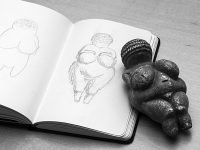|
Few are those who reject interdisciplinary work, though few are also, interestingly, those who practice it. What is a discipline? It is a kind of knowledge, a way of understanding reality, so a discipline is well defined by three aspects of understanding: 1) the object (whose understanding we seek) 2) the method (which we use to understand) and 3) the language (which we choose to communicate understanding). These are the three criteria that demarcate a discipline. The definition is clear, but not precise, because any of these criteria supports, in turn, a more or less detailed hierarchy. For instance, if we consider the object, then discipline can be matter, or living matter, or animals, or insects or ants… So just for this criterion is called science biology, zoology, entomology or myrmecology. If we consider the method, then discipline can be science (not art or revealed knowledge), but in science you can opt for different methodologies, such as theory search (physics), structures (chemistry) mechanisms (biology), systems (economy)… And if we consider the language, then the discipline can be art (not science or revelation), which in turn can be captured in the language of painting, sculpture, film, poetry, music… But, honing further into art and painting, the language may be cave painting, Gothic, Renaissance, Baroque, Impressionism, Cubism, Pop Art… Pure discipline is equivalent to a discipline with well-defined and consistent content, method and language. There has never been such a discipline in science or art, though. Only tradition (in its weak version) or fanaticism (in its strong version) try to keep knowledge in an alleged state of unalterable purity. By definition, knowledge is impure, promiscuous, multidisciplinary, interdisciplinary! In other words, the sharpness of the borders that frame a discipline of knowledge is the sharpness with which the three fundamental properties, content, method and language, are defined. «Inland» in a discipline, far from the border, it is easy to stomp, exploring reality with well-established method and language. However, the territory near the border may seem somewhat risky, slippery. Interdisciplinary spirit means looking over the disciplinary horizon for a change in complexity, a change in approach, a change in language or a combined change in all three. Knowledge advances from its seams, from the borders of their disciplines. Science progresses mainly because it changes the approach to the object of understanding. Thus, quantum physics was created to cater to small objects, special relativity, to account for fast moving objects, cosmology, to treat large objects; biology, to explore the complex objects… Art is always complexities of the human condition so when it changes, it is mainly because of language change. Each avant-garde field is presented with proposed language under its wing. Revealed knowledge tends not to change, or rather when it changes is because it changes the revelation or revealing entity. (Obviously, because a belief often includes the way to perpetuate itself. Hence the relevance of the concept of tradition and its controversial use as an argument; hence the importance of faith and the dubious merit of the creator that attributes it as a virtue.) But the interdisciplinary spirit nourishes also from tasty combinations of content, methods and languages. Not only does art appropriate languages from other art disciplines, as does the painting Nu descendant de l’escalier by Duchamp (1912), from the sequence of photographs Woman Walking Downstairs by Muybridge (1887) – according to his own confession – but also complexities from science, as illustrated by Dürer’s Wing of a Blue Roller (1512).And science is nourished not only with new complexities but also of exotic languages, as Mandelbrot’s self-similarity (1975) did with the Dalí’s painting Visage de guerre (1940), according to the mathematician. The practice of interdisciplinarity requires someone to work previously on the discipline, that much is true, but the spirit of the frontier is valuable because the reality is not to blame for all the syllabus changes negotiated in schools and universities. It is not the worst, though. |
 Jorge Wagensberg Jorge Wagensberg |
Search
© Mètode 2013 - 79. Online only. Pathfinders in Science - Autumn 2013
Jorge Wagensberg
Professor at the Department of Fundamental Physics. University of Barcelona (Spain).





